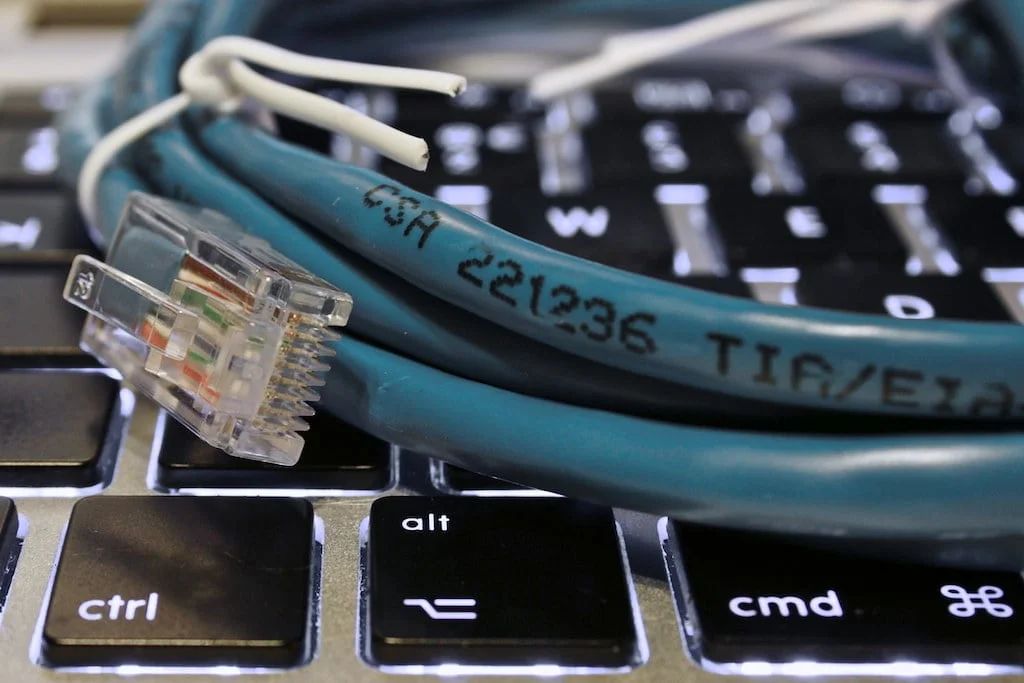Ethernet Cables for Audio Over IP: Integrating Networked Audio in Your Studio
When it comes to optimizing audio connectivity in a studio environment, the use of Ethernet cables for Audio Over IP presents a sophisticated solution worth exploring. The intricate dance of data transfer and network integration is where the magic truly happens. But what specific advantages do these cables offer, and how can they revolutionize your studio setup? Let’s unravel the intricacies of leveraging Ethernet cables for seamless networked audio integration and discover the transformative impact it can have on your studio’s audio workflow.
We are supported by our audience. When you purchase through links on our site, we may earn an affiliate commission, at no extra cost for you. Learn more.
Benefits of Ethernet Cables for Audio
Ethernet cables excel in audio applications due to their scalability, low latency, and compatibility with advanced audio over IP protocols. In the world of Pro Audio and Live Sound, Ethernet cables have revolutionized the way we transmit digital audio signals. The utilization of Ethernet cables in Audio Networks has become increasingly prevalent, thanks to the efficiency of protocols like AVB and IEEE standards governing networked audio.
When it comes to digital audio transmission, Ethernet cables offer a cost-effective and high-performance solution. The ability to transmit multiple uncompressed audio signals over networks with minimal latency makes Ethernet cables a preferred choice in the studio world. With Audio over IP setups becoming more common, Ethernet cables provide a reliable backbone for networked audio systems, allowing for seamless integration and management of audio devices.
In addition to their technical capabilities, Ethernet cables eliminate the need for dedicated audio cables, providing flexibility in connecting various audio devices within a setup. This flexibility is important in environments where audio configurations frequently change, such as live sound events or recording studios. Overall, the compatibility, scalability, and efficiency of Ethernet cables make them a valuable asset in the world of networked audio integration.
Advantages of Networked Audio Integration
Emphasizing seamless connectivity and efficient workflow management, networked audio integration revolutionizes the way audio devices interact within digital environments. Leveraging Ethernet-based audio systems offers a myriad of advantages:
- Scalability: With networked audio integration, studios can easily expand or modify their setups without the hassle of rewiring or adding new cables. This scalability allows for flexible configurations to meet changing demands swiftly.
- Low Latency: The integration of networked audio guarantees low latency transmission, ensuring real-time performance with minimal delays. This feature is vital for maintaining synchronicity and high-quality audio in various applications.
- Cost-Effectiveness: Networked audio solutions present a cost-effective alternative by reducing the need for specialized cabling and infrastructure. This cost efficiency makes it a practical choice for both small studios and large-scale installations.
- Workflow Efficiency: Ethernet-based audio integration streamlines the connection and management of audio devices, enhancing overall workflow efficiency. This simplification of audio routing and control within a networked environment optimizes productivity and organization in audio production settings.
Practical Tips for Setting Up
To guarantee a smooth setup process for networked audio integration, it is essential to implement practical tips that optimize performance and reliability. When working with audio over IP, using Cat6 Ethernet cables is essential for achieving ideal results. Cat6 cables support high speeds and provide better signal integrity, ensuring seamless audio transmission. In environments with high electromagnetic interference, consider employing shielded Ethernet cables to maintain stable audio quality.
Proper termination of Ethernet cables is paramount. Make sure that you use the correct plugs and employ precise crimping techniques to uphold signal quality and prevent any connectivity issues. Additionally, incorporating cable management practices such as using cable ties and labels can help organize and identify cables within complex audio networking setups, making troubleshooting and maintenance more efficient.
Before finalizing your setup, it is advisable to test all Ethernet cable connections using cable testers. This step is critical for verifying proper termination and signal continuity, ultimately ensuring reliable performance for audio over IP applications. By following these practical tips, you can establish a robust and dependable networked audio system that meets your studio’s needs.
Choosing the Right Ethernet Cables
When selecting the appropriate Ethernet cables for audio over IP applications, it is essential to take into account the specific requirements and performance needs of your setup. Here are some key factors to keep in mind:
- Cat6 Ethernet Cables: Cat6 cables are capable of supporting speeds up to 10 Gb/s, making them ideal for high-performance audio applications over IP networks.
- Shielded Ethernet Cables: Shielded cables, often labeled as STP, provide increased protection against electromagnetic interference. While offering enhanced shielding, they tend to be heavier and more expensive.
- UTP Cables: Unshielded Twisted Pair (UTP) cables are the standard choice for most audio over IP setups. Unless there are specific requirements necessitating the use of shielded cables, UTP cables are typically sufficient.
- Termination and Signal Integrity: Proper termination of Ethernet cable plugs is essential for maintaining top performance and signal integrity in networked audio systems. Ensuring that terminations are done correctly can help prevent signal loss and maintain a stable connection.
Enhancing Studio Audio Workflow
Integrating Ethernet cables for audio over IP into studio setups revolutionizes workflow efficiency by enabling seamless connectivity between devices. The use of Ethernet cables in audio over IP setups offers scalability and low latency, important for maintaining high-quality audio production workflows within the studio environment. Networked audio systems leveraging Ethernet cables eliminate the need for dedicated audio cables, reducing clutter and enhancing overall organization within the studio space.






